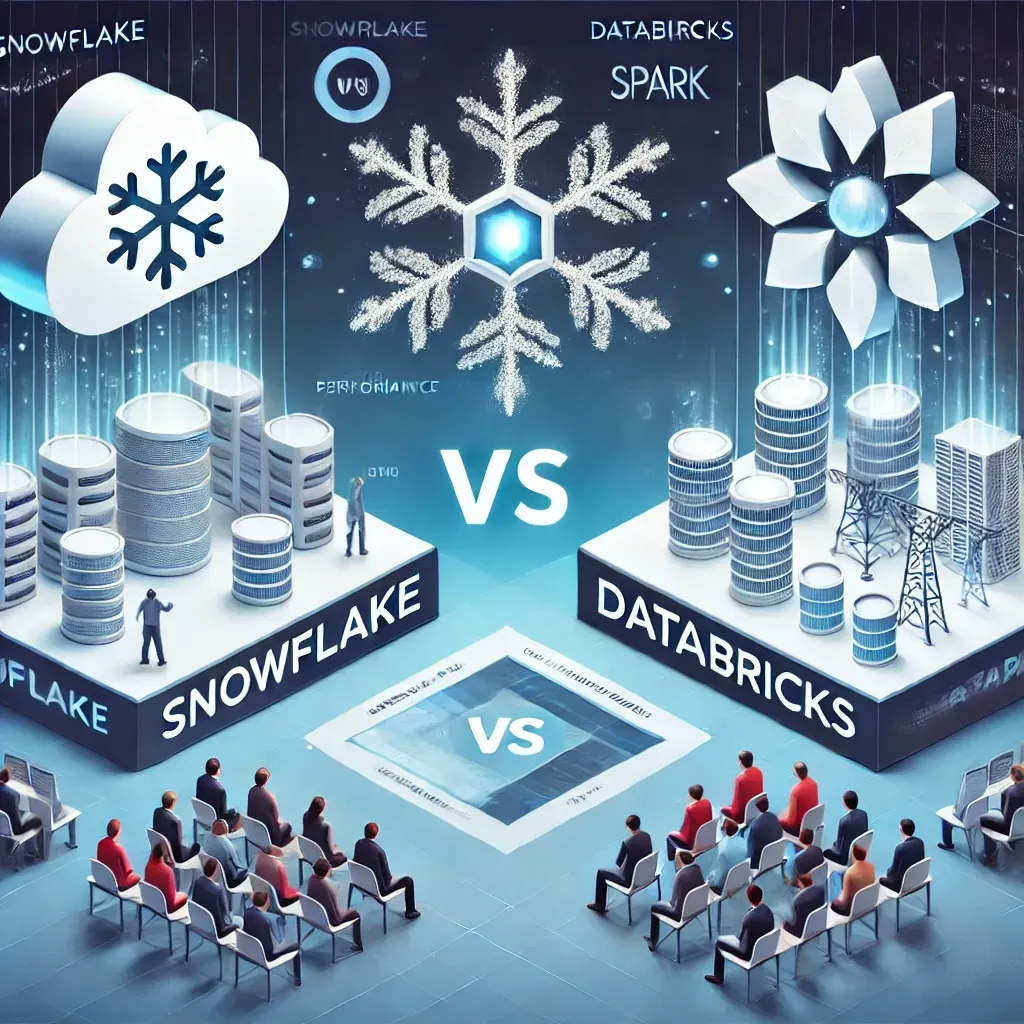
Which Data Platform Reigns Supreme?

When comparing Snowflake and Databricks, both platforms offer robust data management solutions but are optimized for different use cases.
Here’s a breakdown to help decide which might be more suitable depending on your needs:
1. Core Use Cases
Snowflake: Primarily a cloud-based data warehouse, it is optimized for structured data and business analytics. It excels in data storage, scalable querying, and seamless integration with BI tools (like Tableau, Power BI).
Ideal for: Data warehousing, BI reporting, and SQL-based analytics.
Databricks: A unified data platform focusing on big data processing and machine learning (ML). Built on Apache Spark, it offers versatility in handling structured, semi-structured, and unstructured data, and is geared toward data engineering and data science workflows.
Ideal for: Data lakes, AI/ML, streaming data, and large-scale data engineering.
2. Architecture & Scalability
Snowflake: Uses a multi-cluster, shared data architecture that separates storage and compute, allowing independent scaling. It's known for easy scalability with virtually unlimited capacity for structured data.
Strength: Effortless scaling for massive data volumes.
Databricks: Built on Spark’s distributed computing framework, Databricks is highly scalable for both compute and data. It shines in handling large-scale real-time processing with its integration with data lakes (like Delta Lake).
Strength: Real-time processing of very large datasets, useful for ETL and streaming data.
3. Data Processing and Analytics
Snowflake: Tailored for batch processing and running complex SQL queries. It integrates easily with data visualization and BI tools, making it a strong choice for business intelligence applications.
Processing strength: Simplified for SQL users, and efficient for processing structured data.
Databricks: Designed for big data processing, supporting Python, Scala, R, and SQL, along with real-time analytics. It's particularly well-suited for organizations doing machine learning and AI development, thanks to its collaborative notebooks and support for advanced analytics frameworks.
Processing strength: Ideal for ETL pipelines, data science, and ML workflows.
4. Pricing Model
Snowflake: Uses a pay-for-what-you-use pricing model, charging separately for storage and compute. Its auto-scaling capabilities optimize costs by adjusting compute resources dynamically based on demand.
Pricing highlight: Cost-effective for frequent querying and storage, with transparent pay-as-you-go pricing.
Databricks: Pricing is also based on compute hours used, with a flexible model tailored to Spark-based workloads. While it is economical for big data processing, heavy usage in real-time analytics and ML training can increase costs.
Pricing highlight: Best suited for heavy data processing but can become expensive for constant high-volume workloads.
5. Integration and Ecosystem
Snowflake: Integrates well with popular cloud ecosystems (AWS, Azure, GCP), BI tools, and supports data sharing and collaboration natively within the platform.
Ecosystem strength: Strong connections with BI tools and enterprise data management systems.
Databricks: Offers deep integration with Spark-based environments, as well as support for data lakes (e.g., Delta Lake) and machine learning libraries like MLlib and TensorFlow.
Ecosystem strength: Ideal for organizations using open-source Spark technologies or pursuing advanced data science initiatives.
6. Machine Learning & AI Capabilities
Snowflake: While Snowflake can support ML through integrations, it is not inherently designed for machine learning workflows.
ML/AI strength: Limited; mostly relies on third-party tools for ML.
Databricks: Purpose-built for machine learning and big data with built-in collaborative features for data scientists, including support for notebooks and advanced ML frameworks.
ML/AI strength: One of the strongest platforms for big data ML and AI.
7. Performance
Snowflake: Known for its high performance in handling complex queries on large structured datasets, Snowflake optimizes query performance using its architecture with auto-scaling capabilities.
Performance strength: Fast query processing for structured, warehouse-style workloads.
Databricks: Excels in handling unstructured and semi-structured data, especially when dealing with big data pipelines or real-time processing.
Performance strength: Best for big data and streaming workflows.
Conclusion
Choose Snowflake if your primary focus is data warehousing, business intelligence, or SQL-based analytics.
Opt for Databricks if you need a platform for big data processing, machine learning, or real-time analytics.
The choice ultimately depends on your organization’s needs. For more structured data and SQL-centric workflows, Snowflake is supreme. For handling large-scale, varied data types, and performing advanced analytics and AI, Databricks takes the lead.